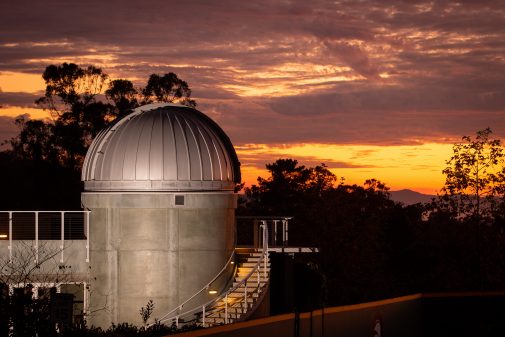Viewing Features Lunar Craters
By
Westmont

A large moon will dominate this month’s free, public viewing at the Westmont Observatory Friday, Feb. 15, beginning at 7 p.m. and lasting several hours. Westmont’s powerful Keck Telescope will turn toward the top of the sky and away from the blazing moon. “We will have the constellations of Auriga, the charioteer, and Taurus, the bull,” says Tom Whittemore, Westmont physics instructor. “Auriga lies in the winter Milky Way with three stunning open clusters. The beautiful Pleiades sits on the back of the bull. We may even be able to see these stars pushing their way through the Merope Nebula. But, again, we are at the mercy of the moon’s light.”
Toward the west, the Great Square of Pegasus will still be high enough in the sky to shoot for the globular cluster, M15.
Westmont’s smaller telescope will zoom in on features of the moon. “The moon will be about 11 days into its monthly cycle, putting the crater Plato in good position and although the crater Copernicus will be pretty well-lighted, we may be able to see the large mountains in the middle of this wonderful crater,” Whittemore says.
Before the public viewing and shortly after sunset, Whittemore says we may be able to get a good, naked-eye look at the planet Mercury. “This will get better and better as the month of February advances,” he says.
The viewing occurs in conjunction with the Santa Barbara Astronomical Unit, whose members bring their own telescopes to Westmont for public use. The Keck Telescope is housed in the observatory between Russell Carr Field and the track and field/soccer complex. Free parking is available near the baseball field.
Filed under
Academics, Alumni, Campus Events, Faculty and Staff, Observatory, Press Releases